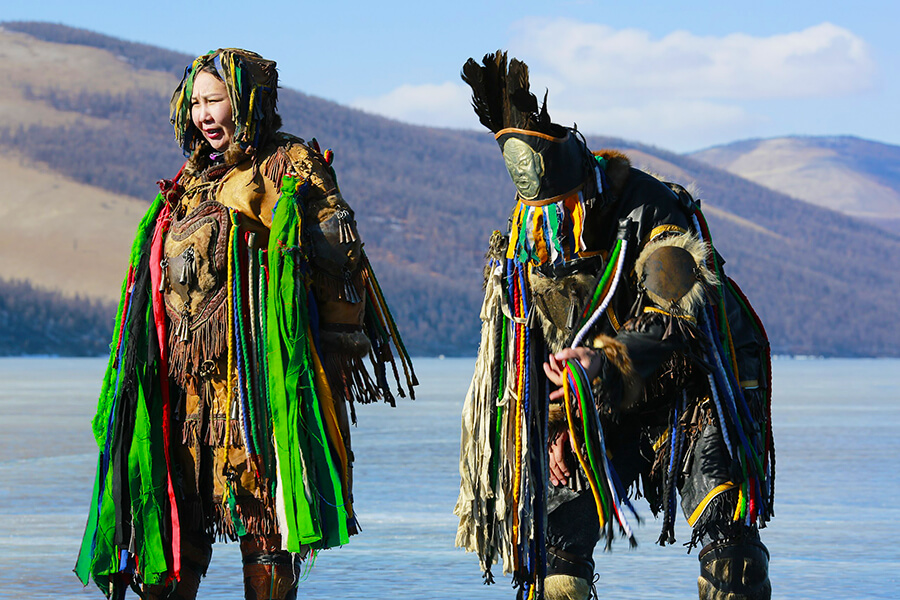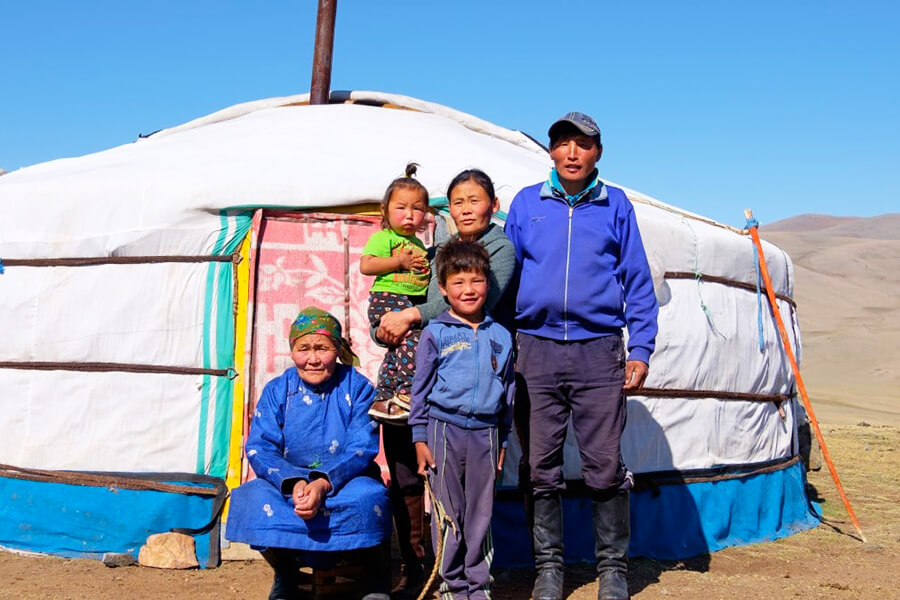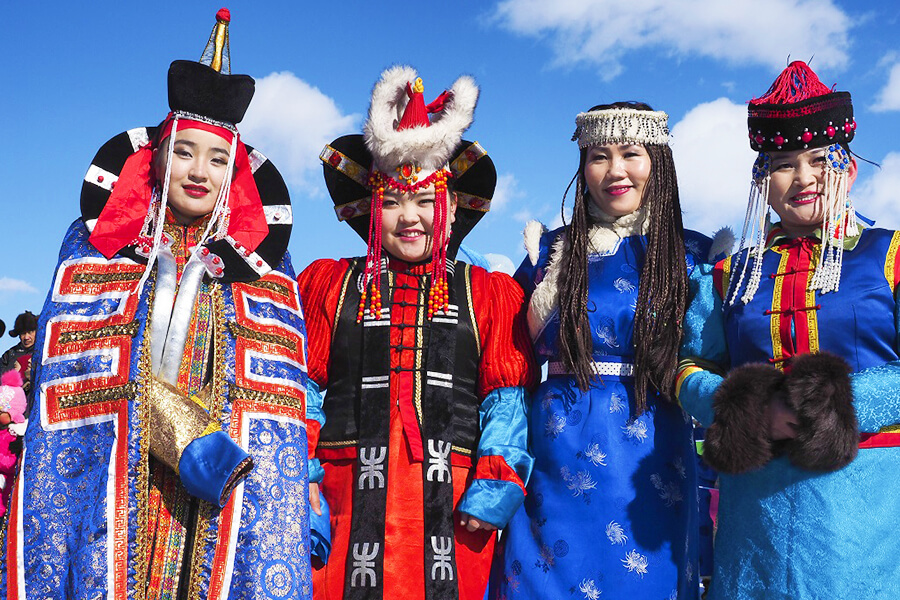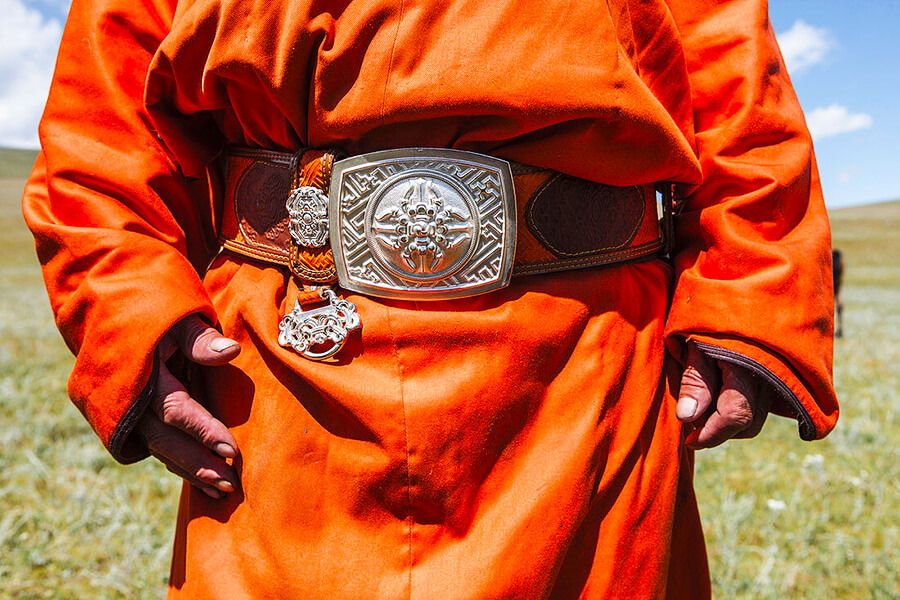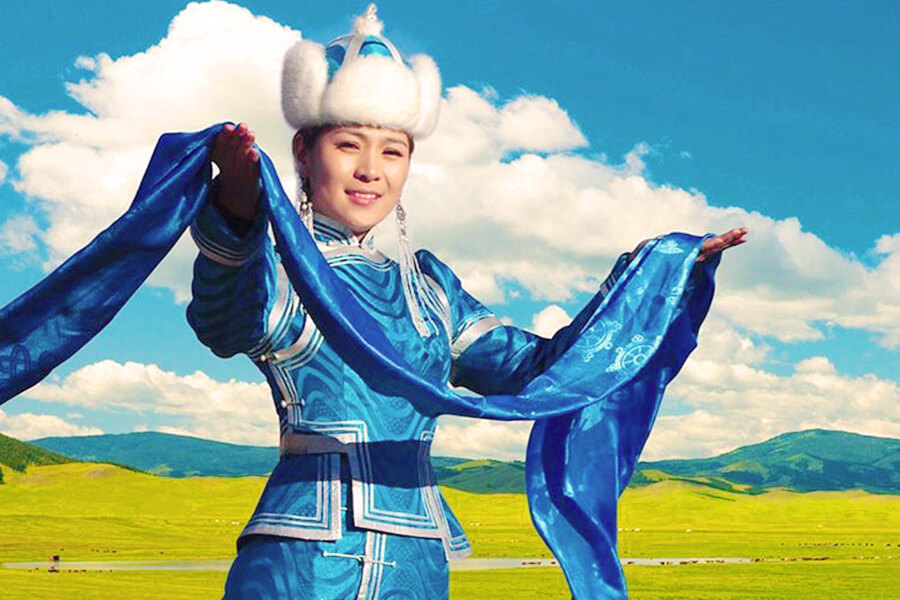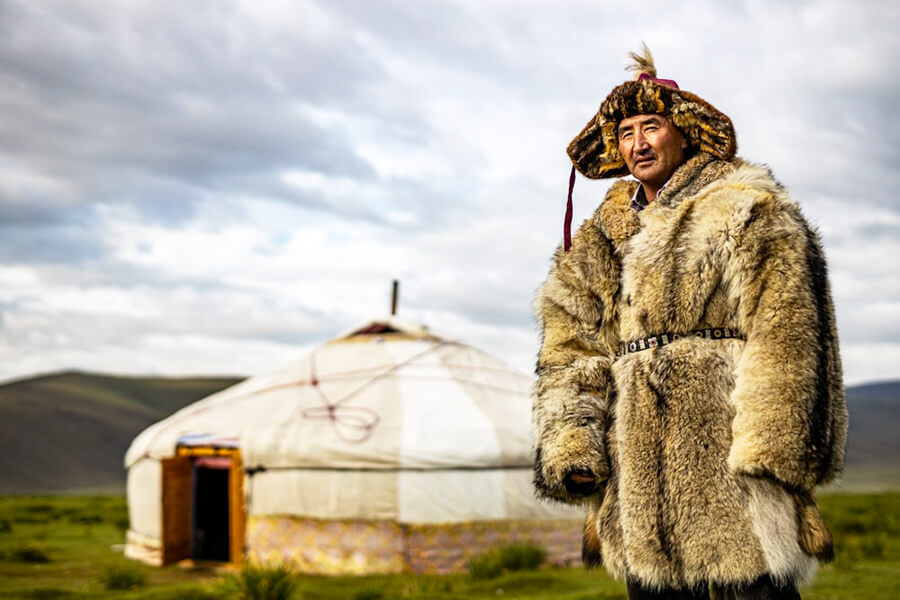Mongolian costumes has a rich history spanning many centuries. It is closely connected with the Mongolian way of life and the country. The costumes of elderly people are, as a rule, modest and plain. Female dress shows differences between the attire of girls and that of married women.
Mongolian Costume in the Modern
Nowadays, Mongolian have modernized their traditional clothes to become more basic and suitable for the rhythm of modern society. Besides traditional clothes, Mongolian also wear modern clothes like other countries.
Clothes of Mongolia in City
Every day in Mongolian cities, most people wear clothes according to modern fashion. Ethnic clothing is only used during traditional ceremonies, festivals, and special events. However, because of the inclement weather, Mongolian clothing is always thick, mostly long-sleeved to protect the body.
Clothes of Mongolia in Steppe
On the savannah, traditional clothes are worn daily with stylized materials, colors and designs so as not to get dirty and entangled. The usual Mongolian costume is quite simple with a robe and a pair of boots (boots).
Mongolian Costume in the Past
The costume in past Mongolia is known for being picky and gorgeous clothes. A long time ago, the Imperial nomadic tribes in Mongolia wear that traditional custom, combining lots of gorgeous jewels. They have their own tailor and tailor shop. Today, families still make these suits and pass them on to their descendants. Mothers are often the ones who sew clothes for their children and then pass to them.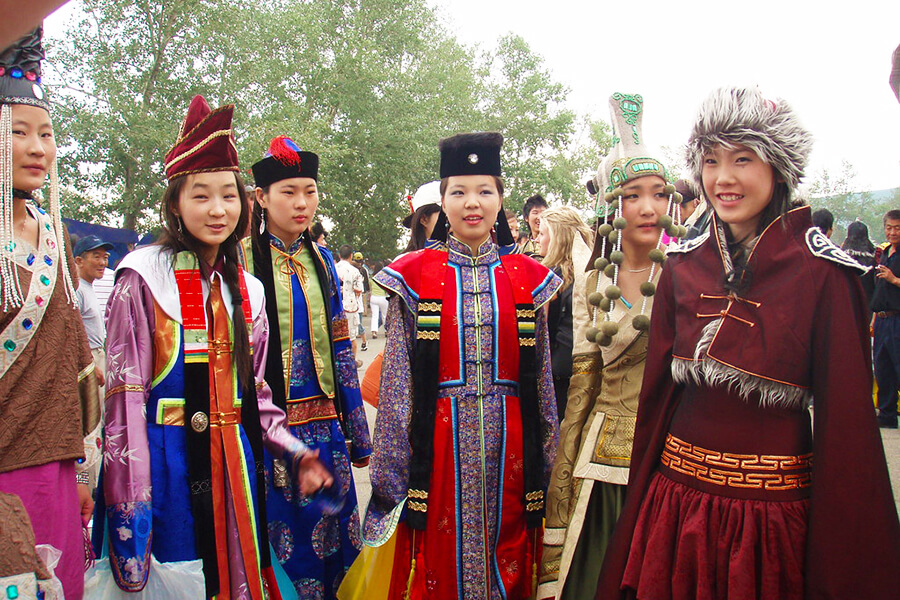
Traditional meanings of Mongolian accessories
The Image of a Hat in Traditional Mongolia
One of the most colorful and original pieces of traditional Mongolian clothing is the hat. They have hundreds of hat styles with different styles. Hats with the Mongols not only show the wealth and age of the wearer but also indicate which tribe they belong to.
At the beginning of the new year, many nomads like to impress by combining their robes with large hats, decorated with silver and coral. The shape and color of a person's hat often indicate where they come from. The headdress of this North Asian steppe people has up to 400 different styles. The commonly used form is conical (blue or red) with 32 stitches, symbolizing the unity of the 32 Mongol tribes. In ancient times, this hat symbolized the strength of the Mongol empire, capable of scaring enemies.
Mongols only use Loovus (headdress) on New Year's Day, festivals or weddings, or other important occasions. This type of hat is usually made from wolf or fox skin and has the function of protecting the user very well when the weather is too cold and there is a north wind.
The Shanaavch type is decorated with small silver bells that have been fixed to the hair of the person who uses it. Tolgoi built is a headdress usually made of silver and cast with precious or semi-precious stones. During traditional ceremonies or festivals, they wear hats embroidered with the image of a red phoenix facing the sun or two dragons playing with a bead. At the crown of the cap are red fringes and shining gems. Family wealth is often measured in precious stones and metals in a woman's hair.
Hats in the Ordos are considered the most characteristic of the Mongols. Hats of this type are called "Fillets", which are mainly composed of "pendants", and "hair covers", and are usually worn in pairs: one on each side of the head. It is not only made by hand embroidery, but also decorated with hundreds of corals, dozens of silver chains, groups of pearls, and many rings of silver, silver plates, and semi-precious stones. Used for a long time, it is like a pearl decorative curtain hanging in front. A pair of fillets weigh between three and four jin (one jin equals a half kilogram) and some can weigh as much as ten jin.
It is said that even a good herd of horses or hundreds of good camels is not enough to buy a pair of classy fillets.
Image “Belt” in Mongolia's Cultural
To enhance nobility, grace (for women), and strength (for men), Mongols often equip themselves with typical Mongolian accessories. One of the most special jewelry of Mongolian is the colorful belt. Details and colors of their belt are mixed and matched with suitable clothes, showing the beauty of Mongolia and the ingenuity in costume.
Waist belts are an integral part of Mongolian attire when wearing a robe. Usually, the belt is three or four meters long and made of cotton, silk, and satin. The color usually comes with a cape. The man's belt, which is usually tightened at the waist, is long and folded into a wide band that serves to tighten the abdomen. The woman's belt is shorter and folds more neatly than the man's. “Sashes” are not simply a decoration for the Mongolian robe, but also have the effect of keeping the body heat of the robe wearer and helping them to move flexibly when galloping.
Scarf in Mongolia's cultural
The people of Mongolia have many accessories for their costumes to fight the cold weather of the late winter and the early spring. Mongolian women often wrap their heads in a shawl. A scarf is usually several zhangs (one zhang is 3.3 meters long). They come in a variety of colors and are made of linen, linen, silk, or thin silk. Young Mongolian women like to tie a scarf around their head, then curl it slightly on the right side, letting the edge down. Married women use the scarf wrapped around the head by tying a circle around, leaving no fringe.
Research documents on Mongolian culture say that the custom of women wearing scarves began in the time of Genghis Khan (13th century). When Genghis Khan unified the Mongol tribes, he ordered everyone to wear scarves and put them on their heads. According to Emperor Mongols, this scarf is symbolized as part of the Mongol flag and that shows the pride of the owner of the scarf as a citizen of the powerful Mongol empire.
During Tsagaan Sar, Khadag green scarf is a special item given to the host by guests. Mongols worship many things and the Khadag scarf is a tool to show their respect for all. Khadarg is only for parents, and the elderly whom they especially respect, and is mainly used in funeral rites. Raw materials for the production of Khadag mainly include cotton, rayon, or pure silk. Khadag can be different, not only by their color.
Coat of Mongolia
In the early spring days, it is easy to see that the common thing in Mongolian costumes is the robe, which the natives call Deel (Mongolian read: Дээл). On the street as well as with families, guests, and hosts, both men, and women, young and old, like to wear robes. In the past, the Deel was the traditional dress of the Mongols and many other nomadic tribes in Central Asia.
This type of cloak is designed for riders, keeping them warm without hindering them. In addition to keeping cold in the winter, those shirts can protect against mosquitoes and insects in the summer. When traveling, they act as a blanket at night. The Mongols of the Ordos region usually wear a long blouse over the Deel. Cloaks are often worn by both men and women on the outskirts of large towns, which are mostly nomadic herders. In urban areas, Deels are mainly worn only by the elderly or used during festive occasions.
Mongolian robes are made from various materials, from animal skin (skin with or without fur) to fabric. Common leather coats are made from sheepskin (lamb), goat (goat), wolf (wolf), fox (fox), otter (otter), marten or weasel. In addition, the Deel of the North Asian steppe people is also made from cotton (cotton), silk (silk), wool (wool), or brocade. Usually, in the spring, the Mongols wear sheepskin and wool Deel (tied around the waist with a belt – belt-like effects); and in the summer they wear a cotton terlig.
The difference between the drawings on the scarf and their length is used for different occasions. The inspirational images printed on Khadag make the recipient extremely excited. For example, one type of Khadag is the Ayush Khadag: The drawings on it show the image of a person. As for Nanjvandan, it has images of the sun, and moon and also many letters written. There are also many other Khadags scarf, named Ayush, Dash, Sersh, Sambai, Nanzad, Nanjvandan, Dashvandan.
About Go Mongolia Tours
Our company offers wonderful chances for Mongolian adventure travel and custom excursions. Our Mongolia packages feature overland jeep exploration, hiking and trekking excursions, sightseeing, horseback riding, camel safaris, nomadic family tours, Mongolian private tours, Mongolian eagle festival tours, Mongolia tour package, and cultural excursions that immerse visitors in the country's traditional way of life.

